ART & DESIGNART REVIEW
Silence Wrapped in Eloquent Cocoons
Judith Scott’s Enigmatic Sculptures at the Brooklyn Museum
By Holland Cotter
December 4, 2014
Judith Scott’s sculptures sit like large, unopened, possibly unopenable bundles, contents unknown, in the Elizabeth A. Sackler Center for Feminist Art at the Brooklyn Museum. In a few, objects can be made out under layers of tightly bound string, rope and fabric strips: a child’s chair, wire hangers, and in one ambitious instance a not-at-all disguised shopping cart. Some pieces suggest the contours of musical instruments, or weapons, or tools. Most are irregularly rounded and sheathed in bright-color yarn. All untitled, they look like gift-wrapped boulders, though it’s hard to gauge their weight or what they might feel like to the touch. Heavy or light? Soft or hard?
You can identity all of them as abstract sculptures and stop there, though this leaves something vital out: clear evidence of a hand and mind at work, spinning out lines and colors as purposefully as expressive strokes in a painting. But expressing what? Mystery provokes speculation. Thoughts of ritual arise, and also of play. Craft associations are obvious, though unorthodox ones: of weaving without looms, knitting without needles. Images from science occur: of nests, circulatory systems, neural wiring. So do links with art history, including the history of fiber art, old and new, which has emerged largely from the hands of women.
Ms. Scott, who died in 2005 at 61, had an interesting history of her own. A twin, she was born with Down syndrome and consigned to a state institution in Ohio at the age of 7. Because she couldn’t communicate verbally, she was classified as “profoundly retarded.” Only in her 30s was it discovered that she couldn’t learn language because she was deaf. In the 1980s, her twin sister, Joyce Scott, became her legal guardian, brought her to live near her in the San Francisco area and enrolled her in an art workshop called Creative Growth Art Center in Oakland.
Creative Growth is an absorbing subject in itself. It was founded in Oakland in 1974 by an artist, Florence Ludins-Katz, and her husband, a psychologist, Elias Katz, as an art workshop for physically and developmentally disabled adults. Operating somewhere between art therapy and a full-on art studio program, the workshop provides materials, professional instruction, and a communal environment, but encourages people enrolled there to work in their own way at their own pace.
Ms. Scott was 43 when she arrived in 1987. She first took up painting and drawing. Several early works on paper are in the show, most of all-over looping, bubblelike patterns done in colored pencil. After a year, she joined a class run by a fiber artist, Sylvia Seventy, and found her chosen medium when she tied a cluster of wooden sticks together with yarn, twine and cloth, attached some beads as embellishments, and — for the first and last time in a sculpture — added paint.
That piece is in the Brooklyn show, organized by Catherine Morris, curator of the Sackler Center, and Matthew Higgs, director of White Columns in Manhattan. And it established a model she would periodically return to, but also elaborate on and depart from. Within a few months, she was making vaguely anthropomorphic forms from multiple wrapped clusters connected with networks of red, green, yellow and purple fabric. And from the start, her sense for color was subtle and acute. In a wings-shaped sculpture from 1989, passages of orange, red and black yarn overlap, seeping into each other in a molten way, like lava.
Ms. Scott made this work, as she did everything, while sitting at a large table. And many early pieces are tabletop flat and could easily hang, like paintings, on a wall. (She never indicated any preference in matters of display.) The sculptures gradually became more complicatedly three dimensional, with branching and bending extensions. In the 1990s, she concentrated on densely swaddled and intricately knotted cocoons and pods that took weeks, sometimes months of steady effort to complete. In some, half-submerged found objects are teasingly visible; others seem to be entirely nonreferential. And as in some of the paper and fabric collages of the New York modernist Anne Ryan, what you keep coming back to is color, texture and a witty, swirling, adventuring hand-madeness.
A flat spoon-shaped piece from 1993 is covered with tufts of multicolored yarn, as it were sprouting flowers. Another, from a year later, looks at first like a heap of random cloth scraps but turns out to be a study in brown, beige and white as well as a compendium of textile types at her disposal: silk, velour, flannel, cotton, denim and something sheer.
Now and again, satiny ribbons add glamour. (Judging from photographs, Ms. Scott was a majestic dresser, partial to turbans and jewelry.) And unlikely ingredients are put to good use. A length of baby-blue industrial tubing turns a flat-topped cocoon into a miniature version of the Bird’s Nest stadium in Beijing. Although her materials were pretty much determined by what was in stock at Creative Growth at any given time, what she did with what she had was her decision alone, and the decisions were genius. Once, when supplies ran low, she gathered paper towels from a kitchen or bathroom at the center, ripped and twisted the sheets and knotted them together to make her single entirely monochromatic sculpture, an image as pacific and alert as a nesting bird.
Was it meant to be an image? Or monochromatic? Or even something called sculpture? The issue of intention, or lack of it, was at one time a factor used to define and isolate the “outsider artist,” particularly if that artist had mental disabilities. The assumption was that insider artists rationally decide what they are going to do and do it, while outsiders, incapable of self-direction, produce like automatons, compulsively. This is a mistaken view of both sides of the divide, yet the divide itself, for better or worse, continues.
And since it does, the question remains of where, in the concept of outsider art, the stress should fall: on outsider or on art? The show’s intelligent catalog addresses this. In an essay, the art historian Lynne Cooke pointedly avoids the reference to biography in writing about Ms. Scott and instead places her work in the larger context of formally related contemporary art. By contrast, an interview by the poet Kevin Killian with the artist’s sister, Joyce, is almost entirely about biography and makes serious attempts to understand Judith Scott’s art though that lens. In the end, both approaches by themselves fall short, but taken together, and kept in balance, are valid and reconcilable. It is from that balance that Ms. Scott emerges as the complex and brilliant artist and person she was.
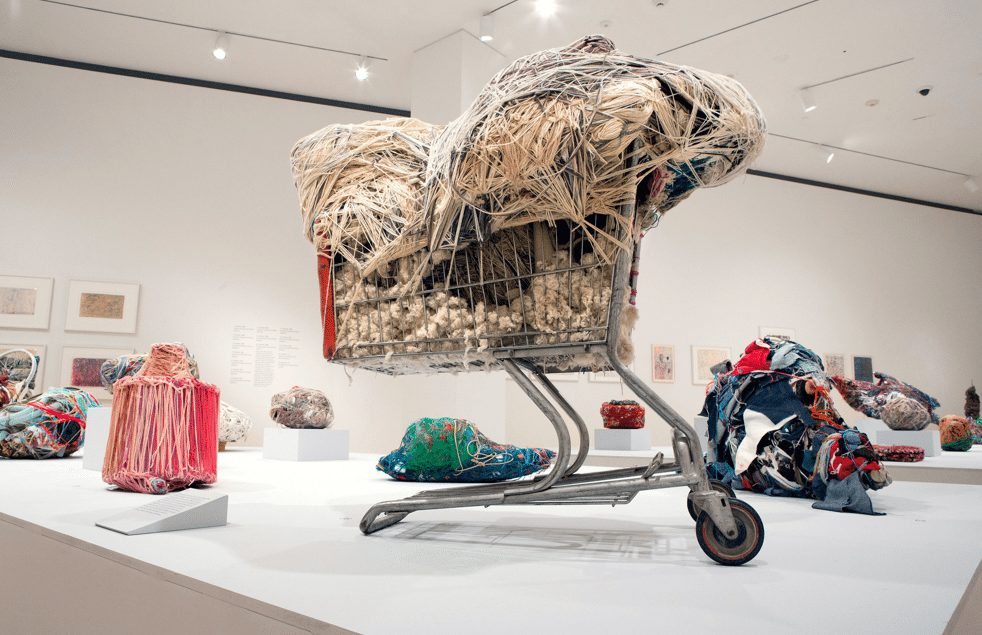
Some of Judith Scott’s work at the Brooklyn Museum exhibition “Bound and Unbound.” Untitled (2003-04), Foreground. Ruth Fremson/The New York Times

Untitled (2002). Ruth Fremson/The New York Times

Untitled (1993), foreground. Ruth Fremson/The New York Times
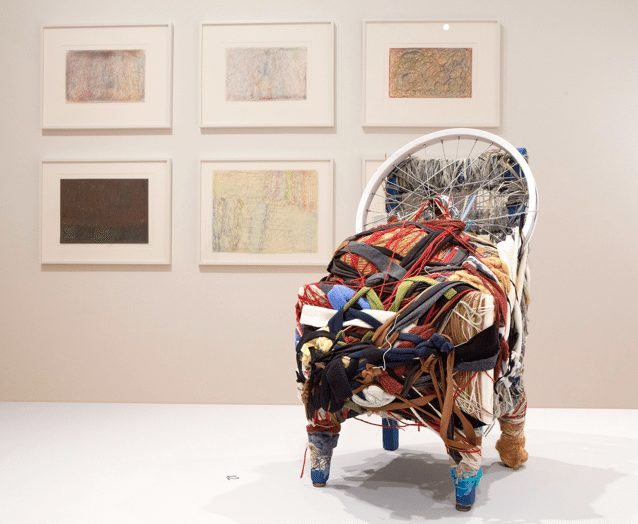
Untitled (2004). Ruth Fremson/The New York Times

Untitled (1991). Ruth Fremson/The New York Times
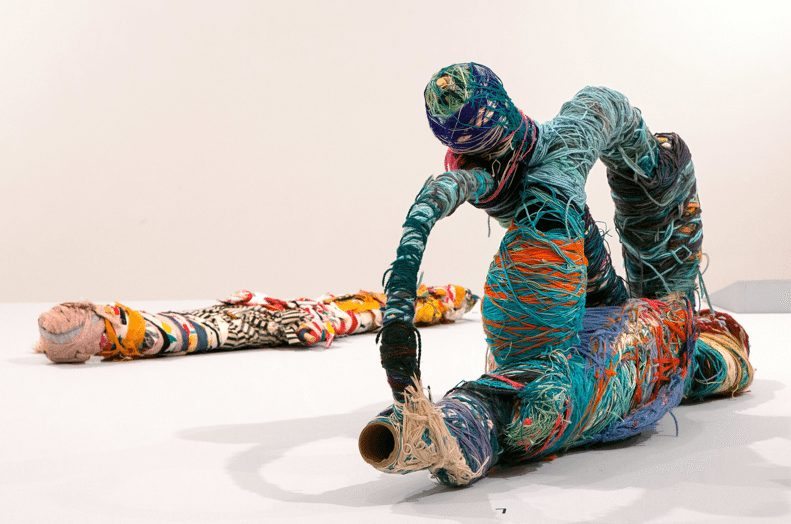
Untitled (1989), right. Ruth Fremson/The New York Times

Untitled (1994), right. Ruth Fremson/The New York Times

Untitled (1997), foreground. Ruth Fremson/The New York Times

Untitled (1991). Ruth Fremson/The New York Times
“Judith Scott: Bound and Unbound” remains through March 29 at the Brooklyn Museum, 200 Eastern Parkway, at Prospect Park; 718-638-5000, brooklynmuseum.org.
________
A version of this review appears in print on December 5, 2014, on page C23 of the New York edition with the headline: Silence Wrapped in Eloquent Cocoons.




 Left, “Fleeing Darfur” (2006) by Mary Whitfield of Birmingham, Ala. Right, “Untitled” (1963) by Minnie Evans of North Carolina. CreditLeft, Galerie Bonheur; right, Luise Ross Gallery, New York
Left, “Fleeing Darfur” (2006) by Mary Whitfield of Birmingham, Ala. Right, “Untitled” (1963) by Minnie Evans of North Carolina. CreditLeft, Galerie Bonheur; right, Luise Ross Gallery, New York
 "Untitled (Bird)” (1982) by T. A. Hay, a farmer from Kentucky. Made of shoe polish and marker on a plastic foam tray, it is at Tanner-Hill. Credit Tanner Hill Gallery
"Untitled (Bird)” (1982) by T. A. Hay, a farmer from Kentucky. Made of shoe polish and marker on a plastic foam tray, it is at Tanner-Hill. Credit Tanner Hill Gallery
 “Untitled” (circa 1970-75), by an artist known as the Philadelphia Wireman. Credit Fleisher Ollman
“Untitled” (circa 1970-75), by an artist known as the Philadelphia Wireman. Credit Fleisher Ollman
 “Untitled” (circa 2000) by Will Branch, from northern Mississippi. Artists from the South continue to play a prominent role in the fair. Credit The Pardee Collection, Iowa City, IA
“Untitled” (circa 2000) by Will Branch, from northern Mississippi. Artists from the South continue to play a prominent role in the fair. Credit The Pardee Collection, Iowa City, IA

 Augustin Lesage’s ‘Untitled,’ circa 1943 PHOTO: GALERIE ST. ETIENNE, N.Y.
Augustin Lesage’s ‘Untitled,’ circa 1943 PHOTO: GALERIE ST. ETIENNE, N.Y.
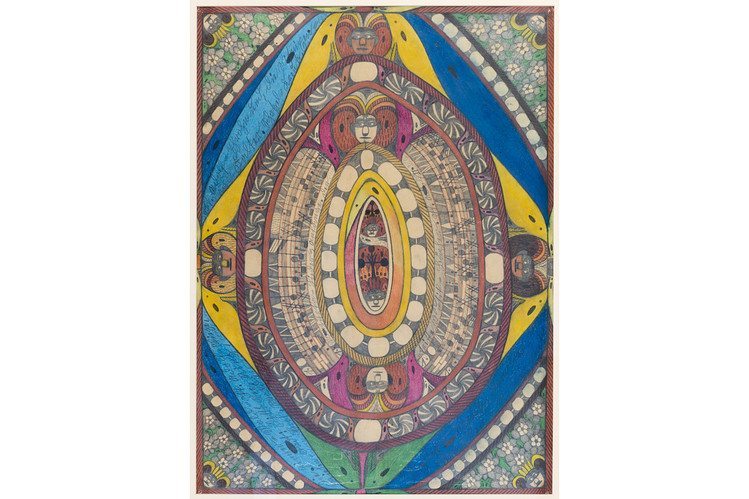 Adolf Wölfli’s ‘Untitled‘ PHOTO: ANDREW EDLIN GALLERY
Adolf Wölfli’s ‘Untitled‘ PHOTO: ANDREW EDLIN GALLERY
 Judith Scott’s ‘Untitled,’ 2003 PHOTO: CREATIVE GROWTH ART CENTER
Judith Scott’s ‘Untitled,’ 2003 PHOTO: CREATIVE GROWTH ART CENTER
 Susan Te Kahurangi King’s ‘Untitled,’ circa 1978 PHOTO: SUSAN TE KAHURANGI KING/CHRIS BYRNE
Susan Te Kahurangi King’s ‘Untitled,’ circa 1978 PHOTO: SUSAN TE KAHURANGI KING/CHRIS BYRNE
 Jerry the Marble Faun’s ‘Windsor,’ 2009 PHOTO: JACKIE KLEMPAY GALLERY
Jerry the Marble Faun’s ‘Windsor,’ 2009 PHOTO: JACKIE KLEMPAY GALLERY

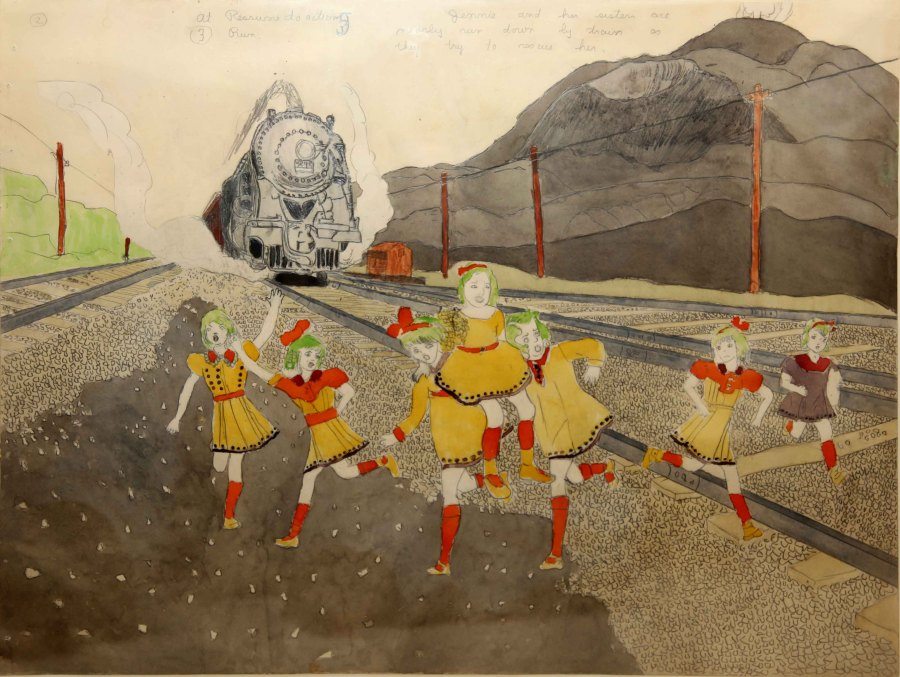 Henry Darger, Jenny and Her Sisters are Nearly Run Down by Train..., n.d. Watercolor and pencil on paper 18 x 24 inches (45.7 x 61 cm)
Henry Darger, Jenny and Her Sisters are Nearly Run Down by Train..., n.d. Watercolor and pencil on paper 18 x 24 inches (45.7 x 61 cm)
 Susan Te Kahurangi King, Untitled, c. 1978, Graphite, ebony and crayon on paper
Susan Te Kahurangi King, Untitled, c. 1978, Graphite, ebony and crayon on paper
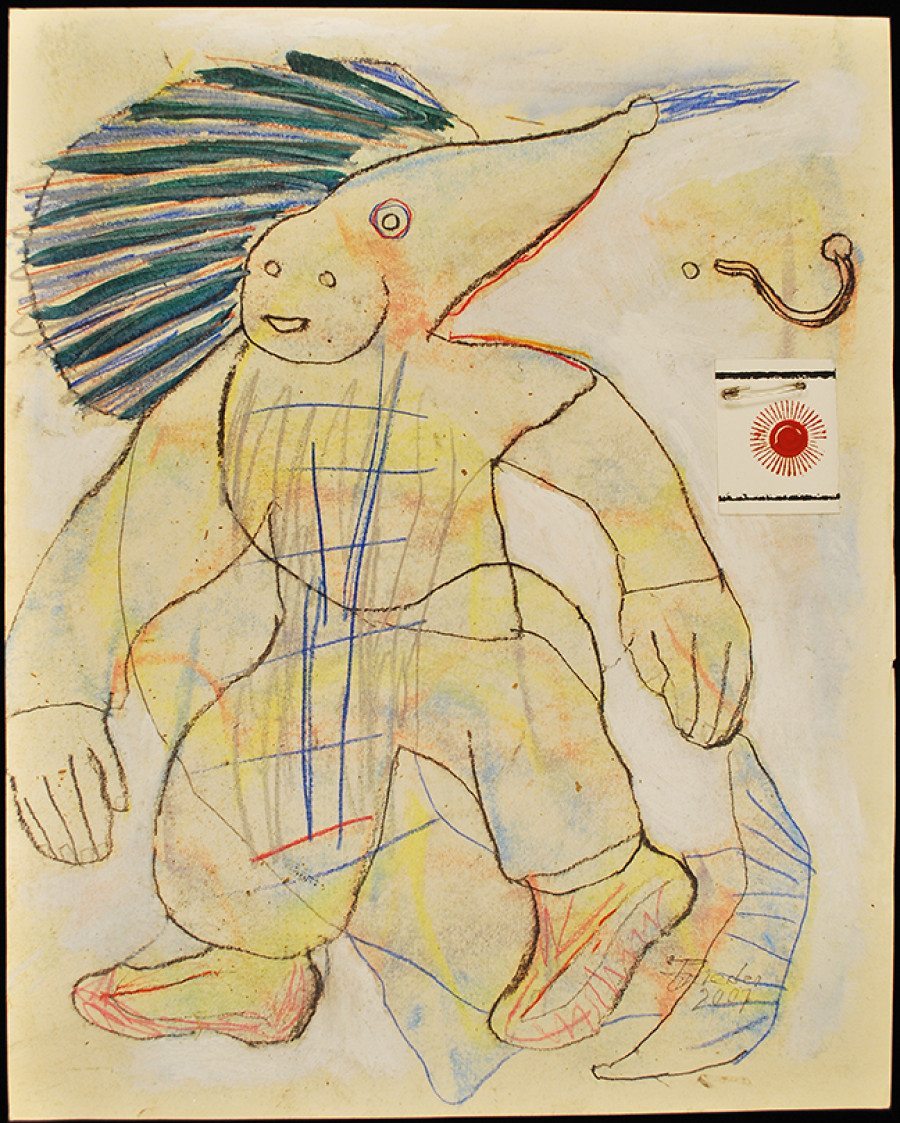 Andrew Frieder, Untitled (Fishman) 2007 mixed media on paper 20X16”
Andrew Frieder, Untitled (Fishman) 2007 mixed media on paper 20X16”
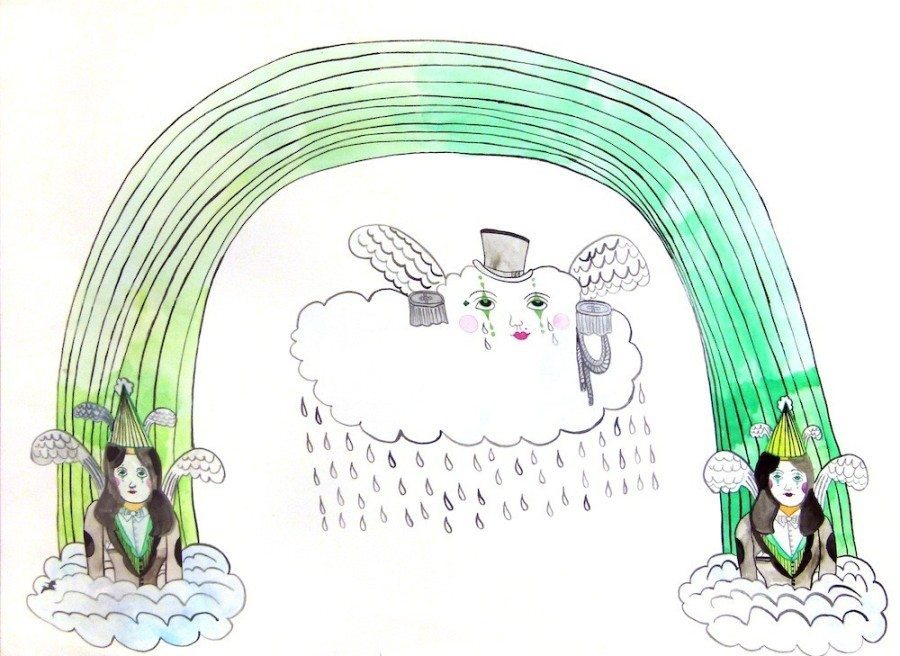 Aurie Ramirez, Untitled, 2009
Aurie Ramirez, Untitled, 2009
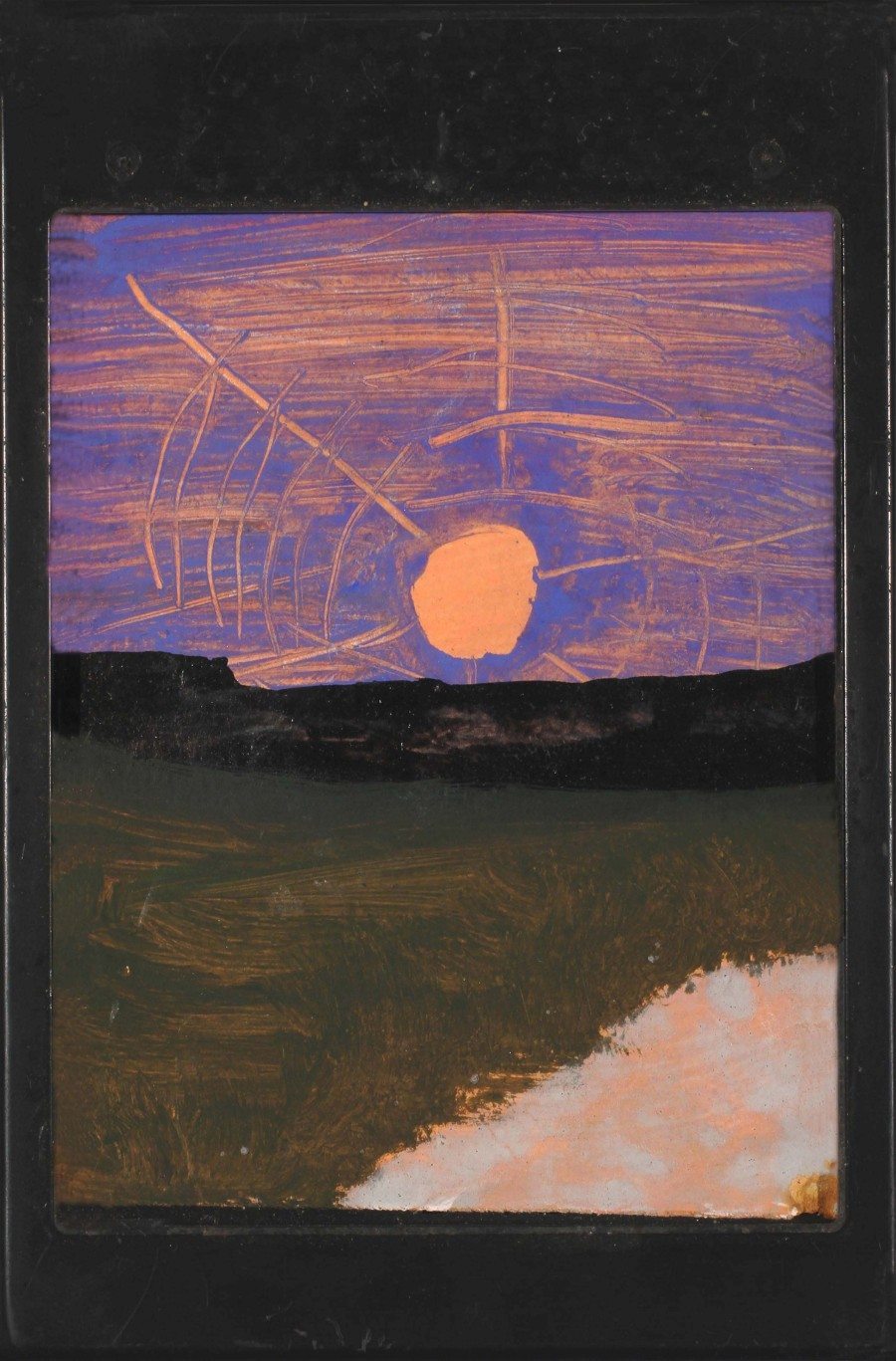 Landscape, Sunset over Black Mountain, Water color and oil on paper ( Polaroid box cover ), 3 13/16” x 3 ¼”
Landscape, Sunset over Black Mountain, Water color and oil on paper ( Polaroid box cover ), 3 13/16” x 3 ¼”
 Adolf Wölfli
Adolf Wölfli
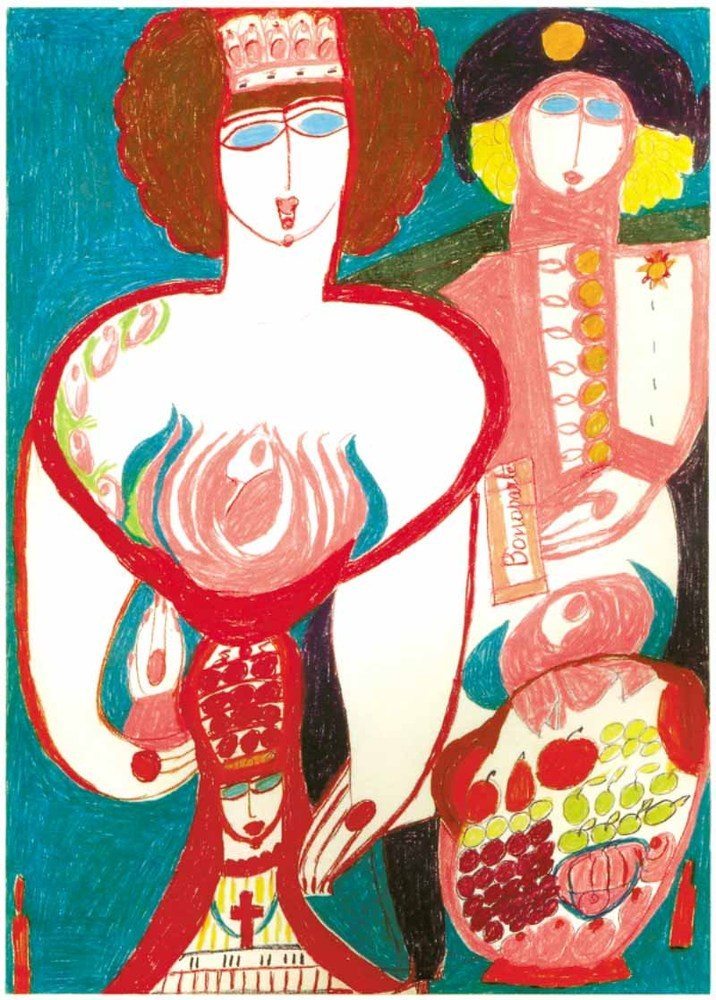 Aloise Corbaz
Aloise Corbaz
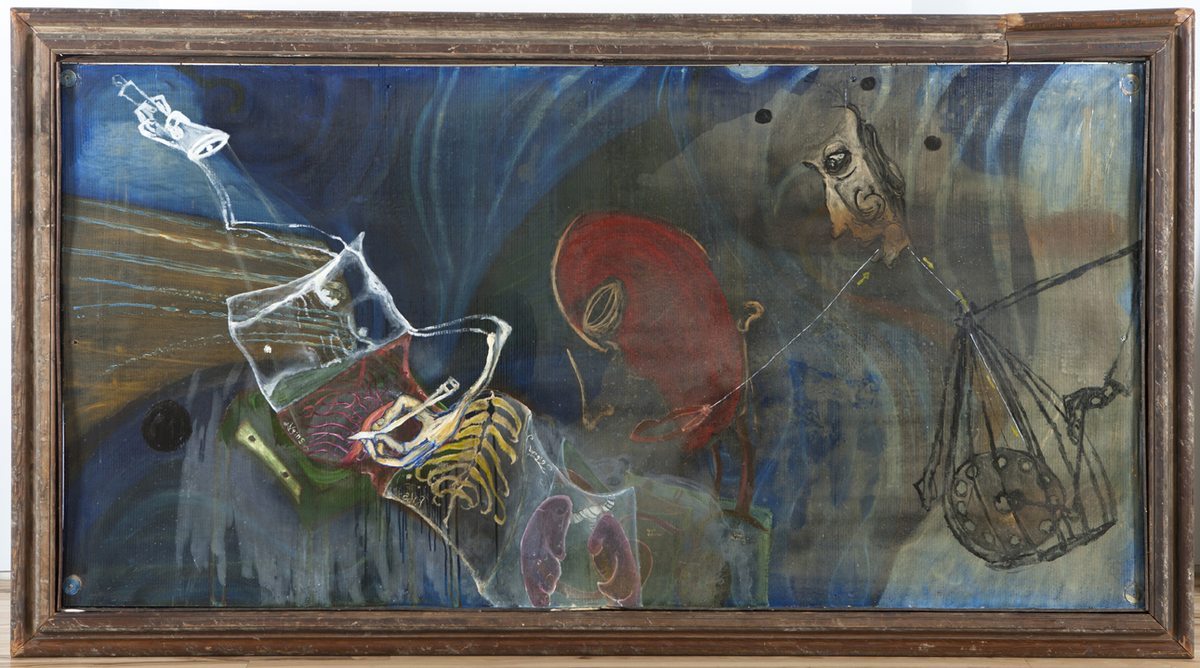 Brent Green
Brent Green
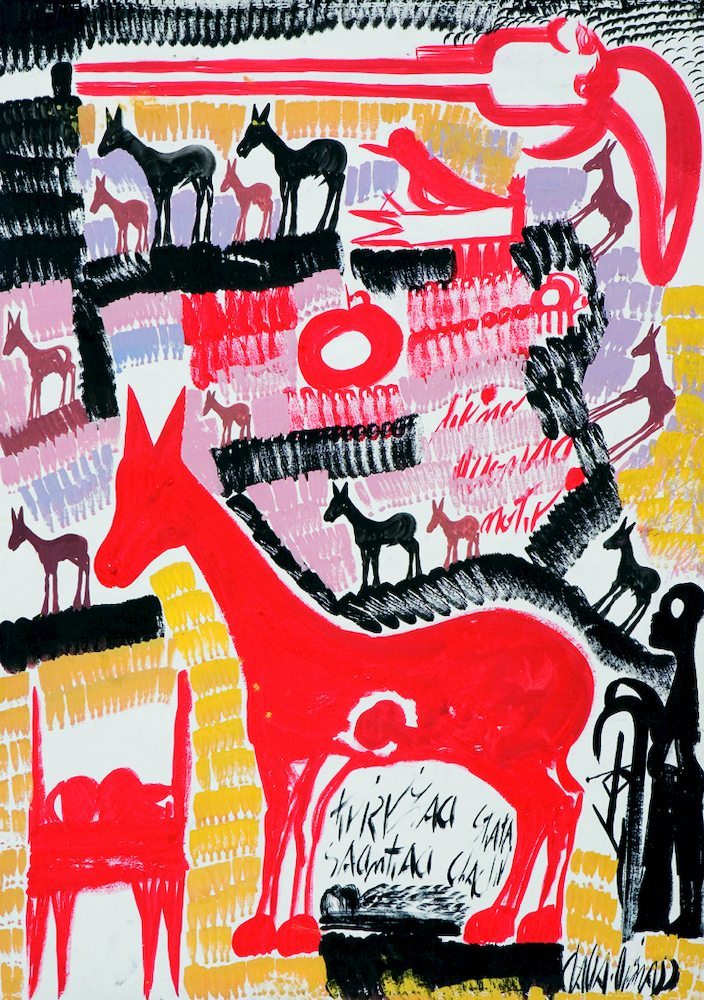 Carlo Zinelli
Carlo Zinelli
 Charles Steffen
Charles Steffen
 George Widener 'Titanic' 2012 ink on paper 48 x 48 in
George Widener 'Titanic' 2012 ink on paper 48 x 48 in
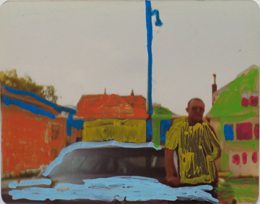
 Judith Scott
Judith Scott
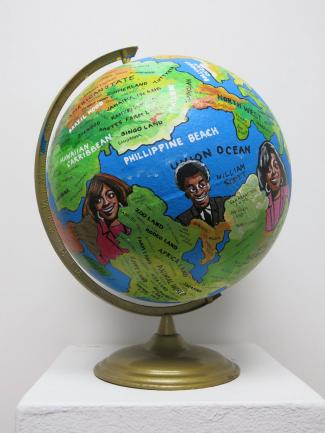 William Scott
William Scott
 Susan Janow
Susan Janow
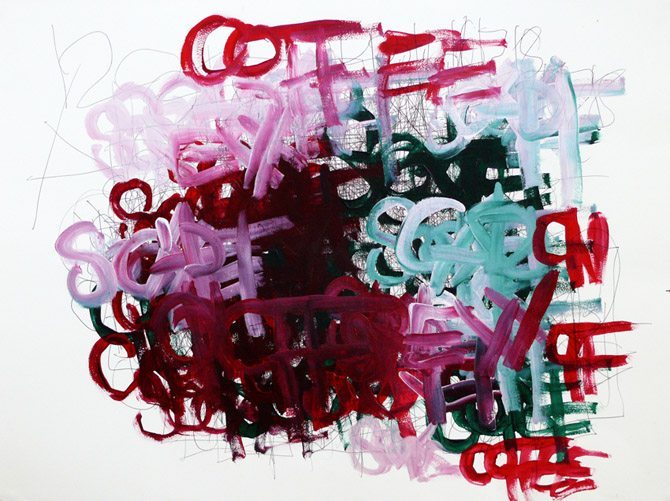 Dan Miller
Dan Miller
 Alice Wong
Alice Wong










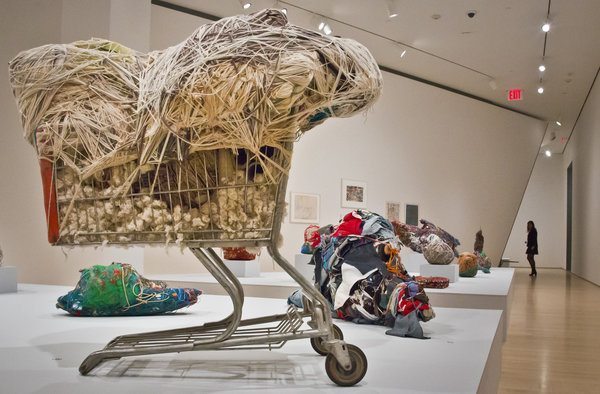 Some of Judith Scott's artwork at the Brooklyn Museum. Credit Bebeto Matthews/Associated Press
Some of Judith Scott's artwork at the Brooklyn Museum. Credit Bebeto Matthews/Associated Press

 A fibre-and-found-object sculpture from 2004 by Judith Scott. Like all her works, it is untitled.
CREDIT COURTESY SMITH-NEDERPELT COLLECTION AND CREATIVE GROWTH ART CENTER; PHOTOGRAPH: BROOKLYN MUSEUM
A fibre-and-found-object sculpture from 2004 by Judith Scott. Like all her works, it is untitled.
CREDIT COURTESY SMITH-NEDERPELT COLLECTION AND CREATIVE GROWTH ART CENTER; PHOTOGRAPH: BROOKLYN MUSEUM


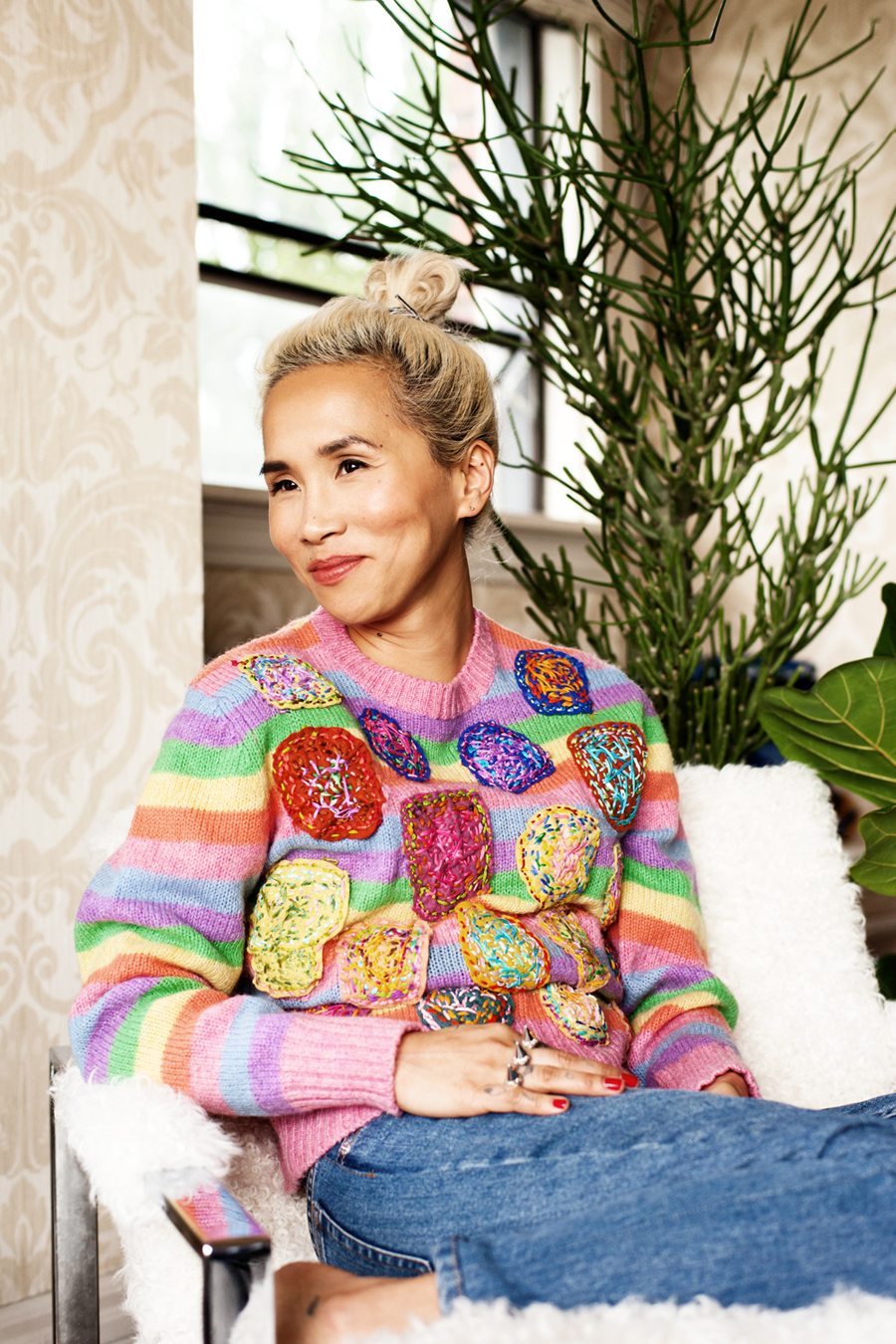


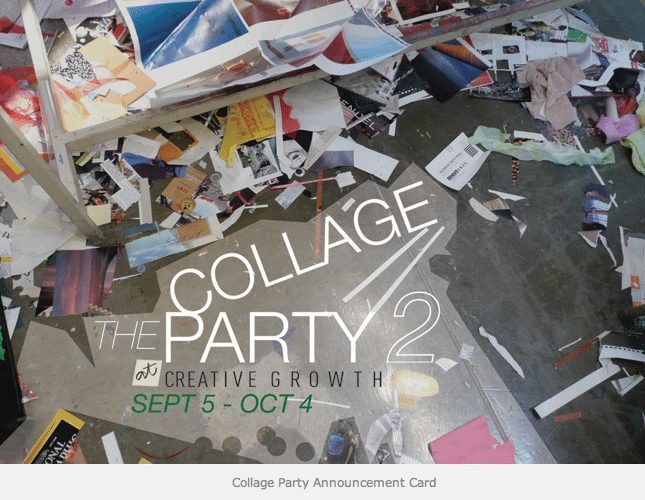



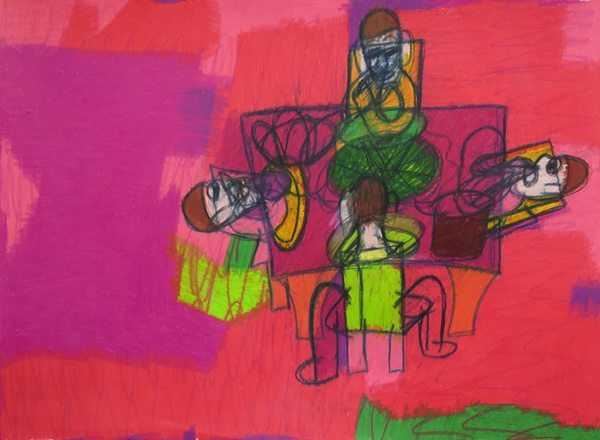

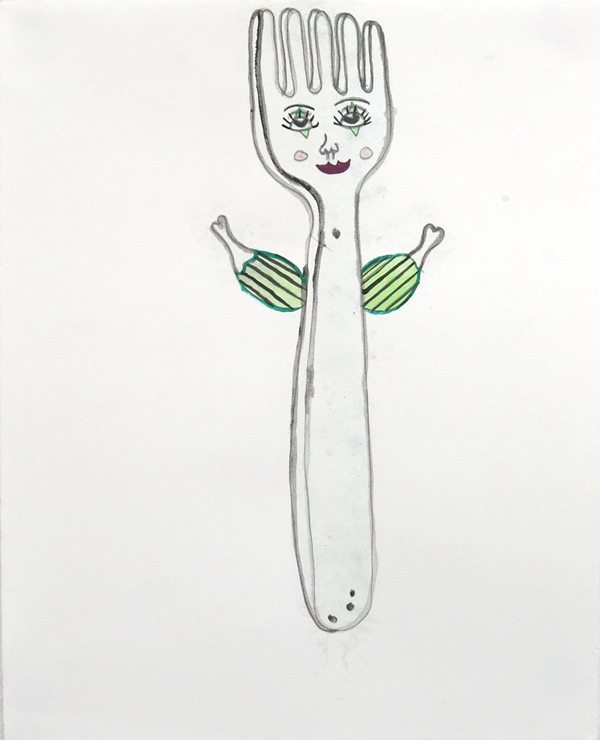
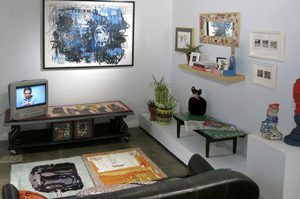
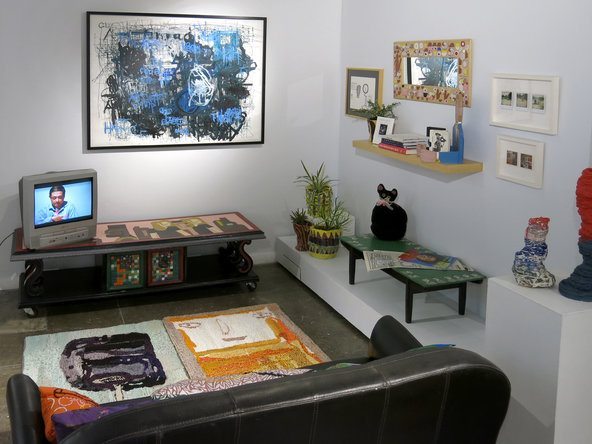 The “Living Room” installation nods to Creative Growth’s humble beginnings — the late Florence and Elias Katz started the organization in their own home 40 years ago — and features art from the center’s many participants.
The “Living Room” installation nods to Creative Growth’s humble beginnings — the late Florence and Elias Katz started the organization in their own home 40 years ago — and features art from the center’s many participants.
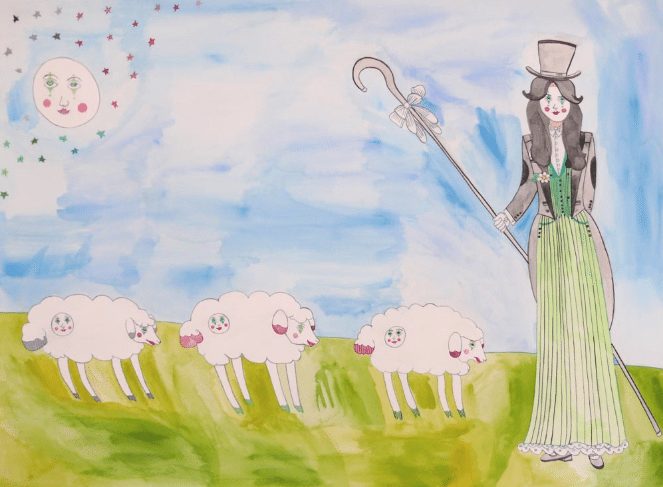 An untitled painting by Aurie Ramirez.
An untitled painting by Aurie Ramirez.
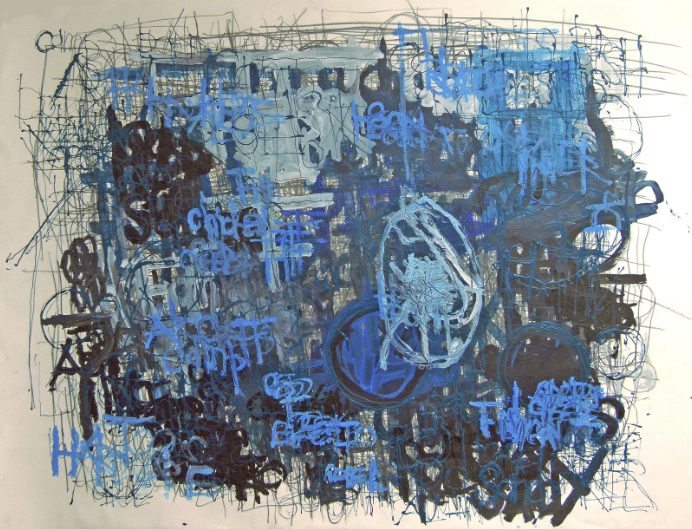 An untitled painting by Dan Miller.
An untitled painting by Dan Miller.